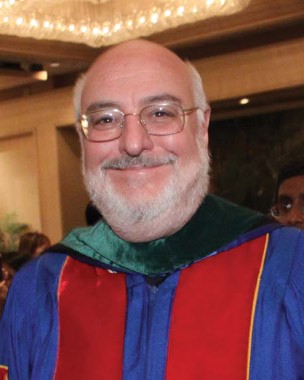Confounded by movement
Movement of the patient with devastating brain injury is often a confounder in the determination of brain death.
This is also a source of confusion and concern for the family. Plantar reflexes have been commonly reported in patients pronounced brain dead. Head turning in response to noxious stimuli, repetitive leg movements, facial myokymia, and other movements have been observed (Wu et al. Crit Care. 2013;17[4]:440; Wijdicks et al. Neurology. 2010;74[23]:1911). When this is observed, knowledge of the potential reflex arcs is needed, and consultation with a neurologist or other physician skilled in brain death determination is usually appropriate.
Movement can sometimes extend to apparent respiratory activity. This can be caused by ventilator autocycling due to variations in circuit pressure (especially in a noncompliant lung or with large tidal volumes) or triggering due to cardiac-induced alterations in transpulmonary pressure. The latter is most common in a hyperdynamic circulatory state.
Apnea is a critical criterion for the determination of brain death and is most reliably assessed when the patient has been removed from the mechanical ventilator. During testing, apnea should be present despite achieving a PaCO2 of greater than or equal to 60 mm Hg, or 20 mm Hg above the baseline to support the diagnosis of brain death.
Some patients, especially those who are hemodynamically unstable or who require high levels of PEEP to support oxygenation, may not tolerate the apnea test without oxygen desaturation or hypotension.
Most commonly, the apnea test is performed with the patient off the ventilator and 6 L/min of oxygen flowing through an insufflation catheter placed near the carina. We prefer to use a modified Mapleson circuit with enough flow to only partially distend the anesthesia bag in the circuit. With this arrangement, one can look not only at the patient’s chest wall and abdomen for signs of respiratory activity but also look for cyclic changes in the level of bag inflation.
In patients with ARDS, trauma involving the chest or other causes of oxygenation failure, CPAP, with or without an antecedent recruitment maneuver may facilitate successful completion of the apnea test (Hocker et al. Neurocrit Care. 2014;20[2]:298).
Controversy over ancillary testing
There are no well-designed prospective studies examining the accuracy of ancillary tests for the determination of brain death using the appropriate control group of patients with coma but who are not brain dead and with blinding of the interpretation of the study results to the clinical setting.
Brain death is not synonymous with complete neuronal death. While cortical areas exhibit moderate to severe histopathologic ischemic changes in the large majority (but not all) of brain dead patients, the basal ganglia and diencephalon inconsistently demonstrate these changes (Wijdicks et al. Neurology. 2008;70[15]:1234). Thus, it may not be surprising that both false-positive (test positive for brain death – clinically not brain dead) and false-negative (test negative for brain death – clinically brain dead) results have been reported for virtually all tests proposed for confirmatory testing, including CT angiography, transcranial Doppler, and nuclear brain scan. Confirmatory testing is most commonly used in patients who cannot complete an apnea test.
It has been forcefully argued that, in adults, confirmatory tests should not be done (Wijdicks. Neurology. 2010;75[1]:77). There will be some patients in whom brain death cannot be definitively determined. When all criteria of the AAN guidelines cannot be fulfilled, clinicians should err on the side of concluding that the patient is not brain dead and turn their efforts toward counseling the family regarding the likelihood of neurologic recovery and assisting the family in ascertaining the desires of the patient under these circumstances.
It is vital that care providers not lose perspective on the plight of the family in these settings. The symbolic power of a beating heart to a parent, spouse, or loved one cannot be underestimated. Family members who observe resuscitation efforts have been shown to have a lower incidence of posttraumatic stress disorder symptoms (Jabre et al. N Engl J Med. 2013;368[11]:1008).
A recent trial demonstrated that family presence during the brain death determination had an increased understanding of brain death without an adverse impact on emotional well being (Tawil et al. Crit Care Med. 2013;42[4]:934). A consistent process for determination of brain death, engagement of the family in the brain death evaluation and helping them understand the meaning of patient movements that can be distressingly misinterpreted, and honesty when a definitive determination of brain death cannot be determined will not remove the misunderstanding or controversy surrounding a diagnosis of brain death but will serve to ensure its accurate and humane application.


